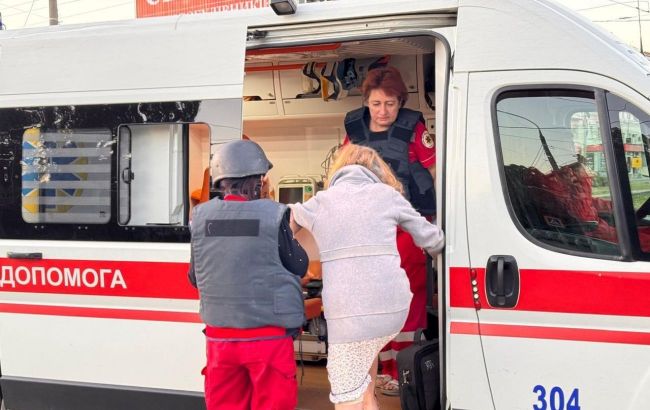Russia hits residential buildings in Zaporizhzhia: 20+ injured, kids among victims
 Photo: Russians attacked Zaporizhzhia (facebook.com/vkgunpzp)
Photo: Russians attacked Zaporizhzhia (facebook.com/vkgunpzp)
On the night of August 30, Russian forces carried out a massive strike on Zaporizhzhia. The aggressor used attack drones as well as ballistic and cruise missiles.
RBC-Ukraine has gathered the key consequences of the attack known at this time.
Strikes with Shaheds
The aggressor continues its tactic of first launching drones, followed by ballistic and cruise missiles. On the evening of August 29, the enemy sent attack drones toward Zaporizhzhia.
An air raid alert was declared in the Zaporizhzhia region as early as 7 p.m., and soon after the first drones appeared in the region’s airspace.
At 8:00 p.m., the head of the Zaporizhzhia Regional Military Administration, Ivan Fedorov, reported the movement of a drone toward the city. After that, he said explosions were heard in the region. However, within half an hour no enemy drones were recorded over the area.
At 9:30 p.m., a new drone appeared, moving toward the regional center, and half an hour later Fedorov reported explosions over the region and in the city itself. Drones continued entering the region and approaching Zaporizhzhia over the following several hours.
Explosions were regularly heard in the city. At around 3:29 a.m., the head of the administration wrote that the occupiers had struck the city with at least three drones.






Missile attack on Zaporizhzhia
At the same time, the Air Force of the Armed Forces of Ukraine reported launches of Kalibr cruise missiles from the Novorossiysk area in the Black Sea, followed later by ballistic and cruise missiles.
Soon after, monitoring Telegram channels reported that missiles were approaching Zaporizhzhia.
Consequences of the strikes and casualties
According to the latest data from the National Police, between 1:46 a.m. and 4:05 a.m. the Russians attacked Zaporizhzhia with 7 missiles and 6 attack drones. The head of the Zaporizhzhia Regional Military Administration said the enemy carried out at least 12 strikes on the city.





Initially, Fedorov reported that three residential buildings caught fire as a result of the strikes. Neighboring buildings were damaged by the blast wave and debris.
However, closer to morning, the enemy again launched Kalibr cruise missiles and ballistic missiles at Ukraine. Powerful explosions were once again heard in Zaporizhzhia. Following this, electricity went out in some parts of the city.
Updated at 8:24 a.m.
This morning, Zaporizhzhiaoblenergo explained that during the night, Russian occupying forces struck the city’s civilian infrastructure.
As a result of the enemy attack, equipment belonging to JSC Zaporizhzhiaoblenergo was damaged, causing a power outage for a significant number of consumers in one district of the regional center.
"Emergency repair works are currently underway to restore electricity to the residents of Zaporizhzhia as soon as possible," the company added.
Overall, during the attack on the city, drones and missiles struck:
- infrastructure facilities,
- private residential areas,
- near multi-apartment buildings.
According to the police, as of 7:30 a.m., the number of injured had risen to 22, including three children. Twelve people were hospitalized.
At the sites of the enemy strikes, investigative and operational teams, police paramedics, explosives experts, forensic specialists, rescuers, and relevant city services continue to work.
Reception points for citizens' statements and reports have also been set up at the sites.






Sources: Telegram channels of the Air Force of the Armed Forces of Ukraine, the head of the Zaporizhzhia Regional Military Administration Ivan Fedorov, the head of the Dnipropetrovsk Regional Military Administration Serhii Lysak, and law enforcement agencies.
Recall that on the night of August 30, the Russians carried out a massive missile and drone attack across Ukraine. Kyiv, Lutsk, Zaporizhzhia, Dnipro, and other regions of the country were under fire.
It is known, in particular, that due to the shelling in Kyiv region, a number of trains are delayed and will arrive at Kyiv station with a delay of up to two hours. Some of these are international trains.
More details on the consequences of the enemy attack can be found in the RBC-Ukraine report.

